Winning ram
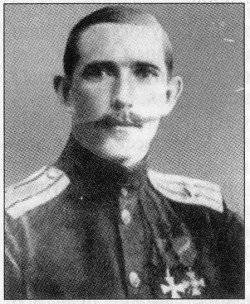 “Everything was burning - amazing picture! - with barbaric enthusiasm, German ace Manfred von Richthofen recalls his bombardments on the Eastern Front in his book The Red Fighter (after the color of his Fokker). - The Russians were planning an offensive, and the station (Art. Manevichi - L. Zh.) Was packed with trains. There was a joyful anticipation of the bombing ... "How could the Russian pilots who first flew unarmed French" morals "and" Newpores "could protect the troops and civilians?
“Everything was burning - amazing picture! - with barbaric enthusiasm, German ace Manfred von Richthofen recalls his bombardments on the Eastern Front in his book The Red Fighter (after the color of his Fokker). - The Russians were planning an offensive, and the station (Art. Manevichi - L. Zh.) Was packed with trains. There was a joyful anticipation of the bombing ... "How could the Russian pilots who first flew unarmed French" morals "and" Newpores "could protect the troops and civilians?Received from the military department of Russia an inexplicable refusal of Russian weapons aviation - "according to the instructions is not supposed"? They bombarded the bombers with a pistol, frightened them with a collision, threatened with a fist in powerlessness ... Back in August 1914, Staff Captain Pyotr Nesterov, world famous for his dead noose, decided for the first time in the world to take a mortally risky move - he defeated the Austrian "albatross" with a ramming stroke. And - he died ... But the tragic seal of death was removed from a risky reception on April 1 (new) by the captain Alexander Kazakov: he dumped the “albatross” from the sky with Nesterov’s “striking” of wheels from above, and landed at his airfield.
Soviet official story suppressed this second, victorious ram, as Cossacks in 1918 were transferred from the Red Army, from the beginning of L. Trotsky, to the British-Slavic Corps formed by the British in Arkhangelsk.
Soviet history was silent about the very name of Kazakov, on whose account 32 (17 personal and 15 group - Ed.) Victories in the sky of the First World War - the first place among the Russian aces.
Foreign - described the outlandish device with which he shot down, even before the ram, 5 aircraft of the enemy Russian ace. At the same time, making mistakes in the name, reducing the number of victories. So, in the mini-encyclopedia of D. Pryunier “Great Pilots” it is reported: “Kazabov Alexander. The Russian ace of 1915 (later the owner of 17 victories), who came up with an original way to send his enemies to the ground: from his "morale" he lowered an anchor on a rope, with which he pulled wings off enemy planes. " Aleksei Shiukov, a Russian pilot and aircraft designer, only at the end of World War II, in the battles of which more than 500 Soviet pilots defeated the enemy with a battering ram, was able to publish in the journal Vestnik Vozduh fleet"His memories of the fearless and inventive Kazakov, of his first aerial battle:" Having caught a German plane, he released the "cat" and hooked its paw on the wing of an enemy machine. But against anticipation, the cable did not immediately fall off, and both cars turned out to be connected. A German pilot with a “cat” in his body began to fall and pull Kazakov’s plane behind him. And only composure helped him to break the cable in several movements, detach from the enemy and go on landing. ”
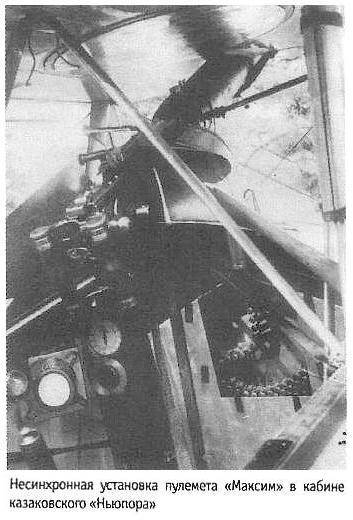 In the memoirs of the squadron commander, Esaula V.M. Tkachev, published only in post-perestroika time, reproduced a report by Captain Kazakov about the sixth duel ending in a ram: “But the damned“ cat ”got hooked and dangles under the bottom of the plane. Two fronts - forty thousand eyes, Russian and German, watching from the trenches! Then I decided to hit the "albatross" with wheels from above, - the calm Kazakov continued the report. - Without thinking twice, gave the wheel down. Something exploded, pushed, whistled ... hit a piece from my “moraine” wing in my elbow. The Albatross leaned to its side first, then folded its wings and flew down like a stone. I turned off the motor - there was no single blade on my screw. I started planning ... I lost my orientation, and only from the shrapnel breaks did I guess where the Russian front was. He sat down, parachuting, but turned on the ground. It turns out that the impact of the wheels was so strong that the chassis was concave under the wings. "
In the memoirs of the squadron commander, Esaula V.M. Tkachev, published only in post-perestroika time, reproduced a report by Captain Kazakov about the sixth duel ending in a ram: “But the damned“ cat ”got hooked and dangles under the bottom of the plane. Two fronts - forty thousand eyes, Russian and German, watching from the trenches! Then I decided to hit the "albatross" with wheels from above, - the calm Kazakov continued the report. - Without thinking twice, gave the wheel down. Something exploded, pushed, whistled ... hit a piece from my “moraine” wing in my elbow. The Albatross leaned to its side first, then folded its wings and flew down like a stone. I turned off the motor - there was no single blade on my screw. I started planning ... I lost my orientation, and only from the shrapnel breaks did I guess where the Russian front was. He sat down, parachuting, but turned on the ground. It turns out that the impact of the wheels was so strong that the chassis was concave under the wings. "The effect of ram attacks, adopted only by Soviet pilots for two cases: if the ammunition ran out or if the onboard failed weapon, had a striking psychological impact on the enemy. Hitler's ace, for example, since the fall of 1941 was recommended not to approach our fighters closer to 100 m - in order to avoid ramming. And in 1915, after the ram of Kazakov, the German command appointed a special prize for the destruction of the “Russian Cossack”. One of the German pilots shot down by him reported that, returning from captivity, he would proudly tell: “the Russian Cossack himself” struck him down.
For a ramming battle, the Cossacks were promoted to staff captain, rewarded with the highly esteemed cross of the Order of St. George the Victorious and the St. George Weapon - blade with the inscription “For Bravery” in Russia.
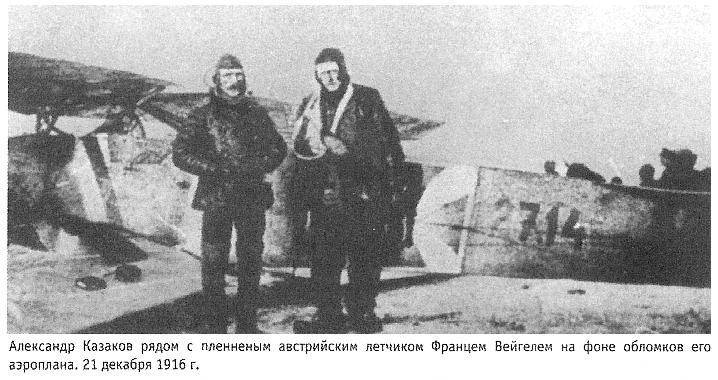
The orders are supposed to be washed, but the ace experts, as the hero came to be called, surprised their colleagues with their refusal to drink alcohol: “The head of the pilot must be clear, especially in war.”
... The detailed biography of Alexander Kazakov was first recreated by Vsevolod Ivanovich Lavrynets-Semenyuk, Lenin Prize winner, Hero of Socialist Labor and many other high awards - "for outstanding achievements in creating samples of rocket technology and ensuring the successful flight of Yuri Gagarin into outer space." A fan of the fearlessness cult, in his advanced years he began to publish essays about the first Russian pilots. There were many reviews. From Estonia, a parcel was received from Edgar Meos, a graduate of the Gatchina Aviation School, who fought in the First World War in France as part of the famous “Stork” air group and shot down the famous German expert (French and Russian - ace) K. Menghof. It turns out that Meos published in Estonia in the 30-ies. Twentieth century. his essays on Kazakov based on the book "Broken Wings", written and published in Germany by a colleague of Kazakov in the British Slavonic Corps - Alexander Matveyev.
“Alexander Kazakov flew a lot ... boldly, confidently and, as the soldiers used to say, always happy,” Alexander Matveyev recalled in his book. - He was idolized. When our commander passed, everyone parted, giving way, and arresting a tall, thin staff captain ... A blue-eyed blond man with a handsome Cossack mustache and the gentle face of a young man. Leather jacket, peaked cap with colored band, golden shoulder straps with black signs of a pilot ...
“Tell the truth!” He demanded from his subordinates ... Before take-off, he made himself a sign of the cross and confidently commanded: “From a screw!”.
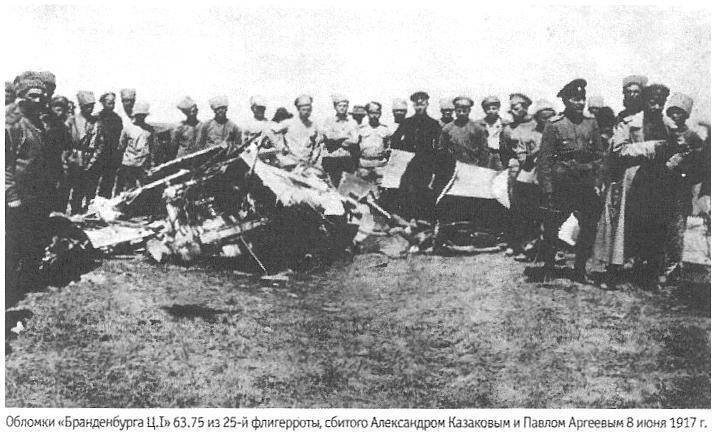
At the time of the Brusilov breakthrough, the Cossacks became the commander of a small but courageous first squad of fighter pilots who flew on new ones, armed with, finally, machine guns from the Newpores. “The actions of Kazakov’s first combat group in September 1916 put the STARTING OF ORGANIZED APPLICATION OF FETUSING AVIATION ONLAND,” writes V. Tkachev, further formulating the tactics of the Russian destructive group. - Here the group tactics first appeared, and the meaning of air superiority was determined. It is interesting to emphasize that, in September 1916, near Lutsk, something like what happened in February of the same year near Verdun was repeated: our fighter aircraft completely secured the rear of the Russian troops in the Lutsk area from air strikes. ”
The tactics developed by Kazakov, for decades to come, determined the priorities of the Russian fighter aircraft: unlike the German ones, which prefer personal victories over enemy aircraft, our falcons considered it their priority to cover the troops and their rear lines from the raids. Kazakov, according to Matveyev’s memories, frustrated with congratulations for another victory: “I don’t understand anything! What kind of congratulations? For what? You know that I am prejudiced: I don’t like to count my victories. ”
Ace taught young people to calculate the approaches to an armed airplane from a favorable position on the ground, to lead attacks from the sun, despite the fire of the enemy. He was wounded, but every time it was easy - fate kept. “Usually, Kazakov went to the enemy with a firm decision not to turn anywhere to the side,” A. Shiukov testifies. “At the speed of approach, he gave a short machine-gun fire and most often fought the pilot ... repeated the attack until the enemy was shot down or forced to escape.
... The morale of the troops, which builds the victory, was exhausted on both sides by the end of the summer of 1916. Through the trenches, flew from one side to the other and back to the question: what are we fighting for? Why kill each other? The answer was known to the ruling persons, but kept secret. Kaiser Wilhelm only slightly opened the curtain, letting it slip: "If the peoples knew the causes of wars, they would hardly have fought."
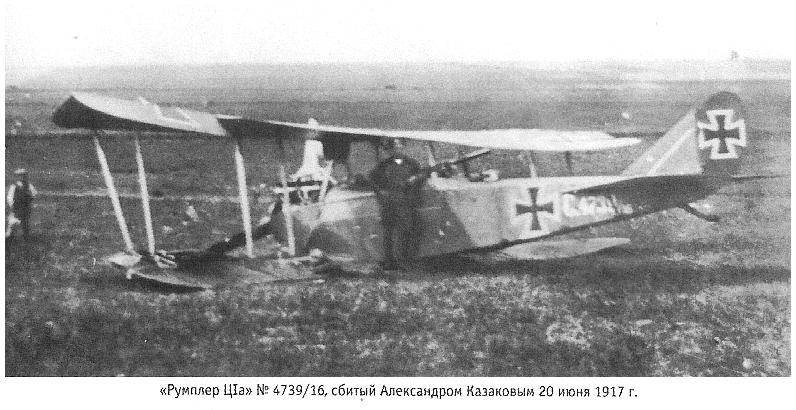
After the forced abdication of Tsar Nicholas II, the Kazakov air group continued to fight. But aviation also realized the collapse of military discipline after the well-known orders of the Provisional Government, the election of commanders introduced ...
Many front-line soldiers, from the highest ranks to the lower ones, are moving to serve in the newly created Red Army. Around the former chief of staff and commander in chief of the Northern Front, General MD Bonch-Bruyevich, who became the chief of staff of the Supreme Commander of the Red Army, - hundreds of military officials who have heard about the famous Russian ace. He, who arrived in Petrograd, is determined by the military expert to help in the organization of the Red Air Fleet. And he wants to fly, as his comrades fly - Grandma, Bruni, the conqueror of the corkscrew Artseulov ...
“But the“ demon of the revolution ”L. Trotsky did not trust the former officers, writes Alexander Matveyev, believed that“ these eagles ”want to make the“ red fleet ”white, and in an offensive form refused to Kazakov to return to the sky.”
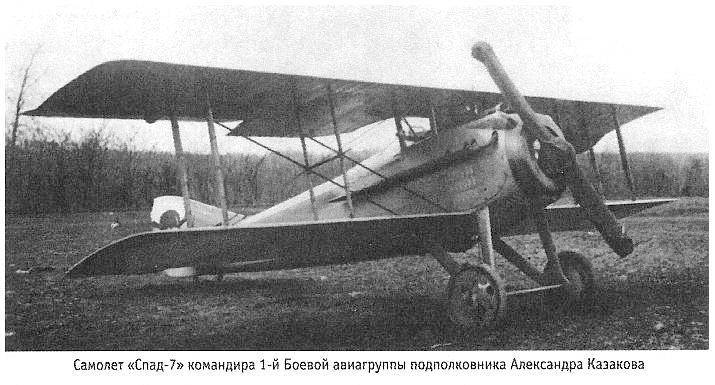
And soon, the pilot Sergey Modrakh, who had announced himself in St. Petersburg, announced that the English pilot Sir Gil was recruiting Russian pilots to the British Slavic Corps, which was being formed in Arkhangelsk, to be transferred to France in order to continue the war with the Germans. “Kazakov hesitated,” recalls asa Matveyev. “But Modrach persuaded him.”
When asked by the Russian aviators when they were sent to the European theater of war, the corps commander Colonel Moller answered: “Where the Bolsheviks are, there are Germans. Why should you go looking for them? Fight here. ” They determined the airfield - in the village of Dvinskoy Bereznik. Quickly retrained to fly on sea boats "sotvich". In the battles suffered heavy losses. A sad cemetery of dead pilots with propellers on graves grew near the airfield.
In January, the 1919 of Kazakov met the formidable flying boat of the Russian aircraft designer D. Grigorovich over the Northern Dvina - a “nine” who poured lead over the sopvich. Out of habit, Kazakov answered - and shot down ... Edgar Meos explained from Matveyev: "Having shot down the flying boat of the Red Air Fleet, he finally blocked his way back to Soviet Russia." But the lieutenant Anikin, who had run to the krasvoenlety, was accepted, flies ...
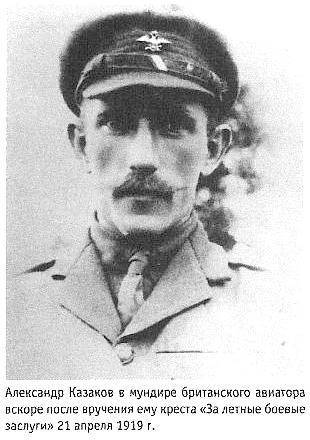 In the summer of 1919, the intervention was exhausted; the Russian air group received an offer to leave for England as part of the corps. Few agreed, starting to learn English urgently. Others decided with the expedition B.V. Vilkitsky, equipped by the Soviet government to study the Northern Sea Route, but received an order from the White Guards to deliver the goods to Kolchak, to move with polar explorers.
In the summer of 1919, the intervention was exhausted; the Russian air group received an offer to leave for England as part of the corps. Few agreed, starting to learn English urgently. Others decided with the expedition B.V. Vilkitsky, equipped by the Soviet government to study the Northern Sea Route, but received an order from the White Guards to deliver the goods to Kolchak, to move with polar explorers.1 August 1919 g. Modrah Belousovich left on the pier. “I take you to the“ copic ”, - as if illuminated by some thought, said Kazakov. A mechanic in a new leather jacket was busy at the flying boat. “Again - new clothes? - asked the commander. "Alien, the British gave before leaving."
Witness of this conversation, Alexander Matveev, sounded in memory the last words of the commander: “Someone else ... Yes, everything is alien here. Airplanes, hangars, even the form on me ... Only now the land is still our ... Get it! ”
He tore off a stalk of grass, biting him, thought hard about something. I crossed over as usual. Took off. From the steamboat sailing away with the battle friends, smoke flowed thin snake. Kazakov rose even higher ... Suddenly a sharp turn ... The sopwich flew down with a stone, Crack ... Dust ... Silence ... Just heard the grasshoppers crackling in the grass. "
Not believing in the suicide of an Orthodox pilot, friends felt that his heart was torn from desperate despair. He was buried in the cemetery in Bereznik, under two criss-cross propellers.
The grave is not preserved. But some higher power does not allow to erase the names of Russian heroes from the tablets of history ...
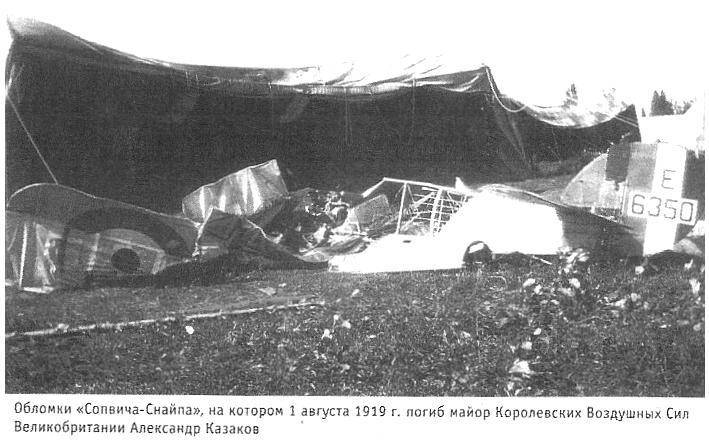
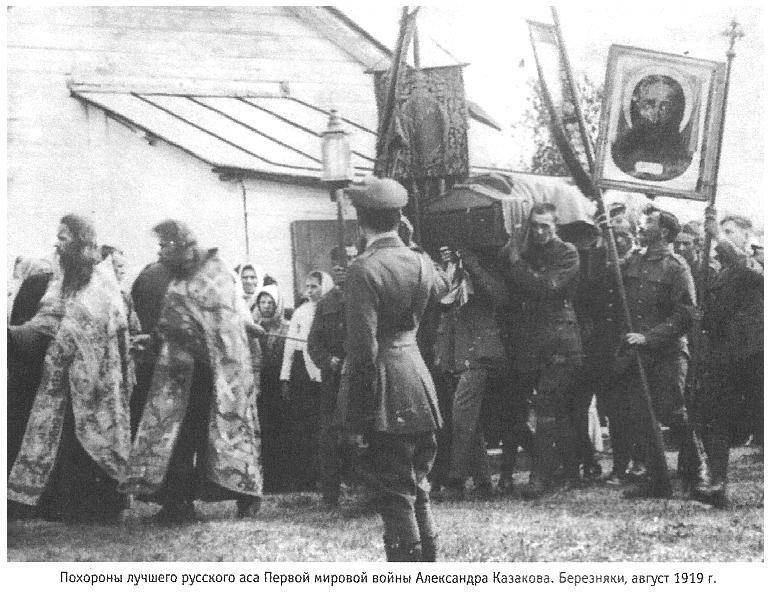
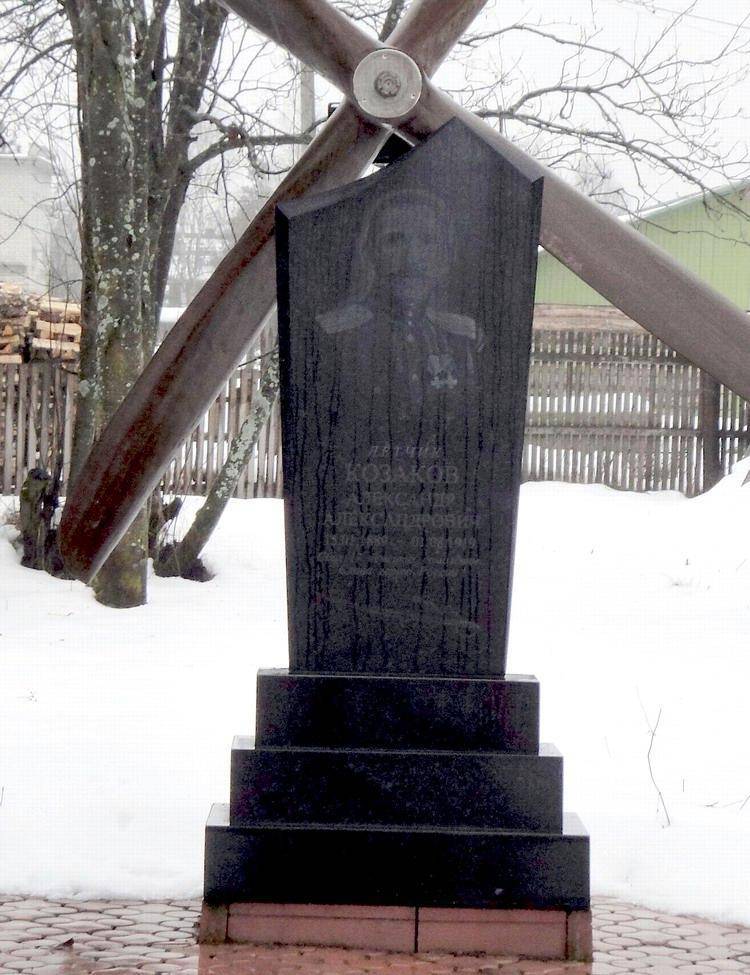
Information